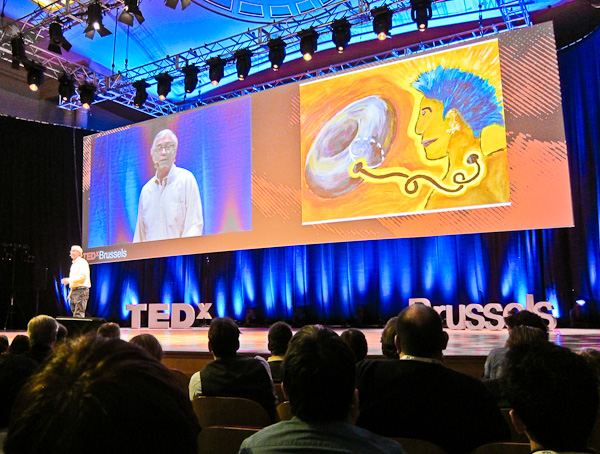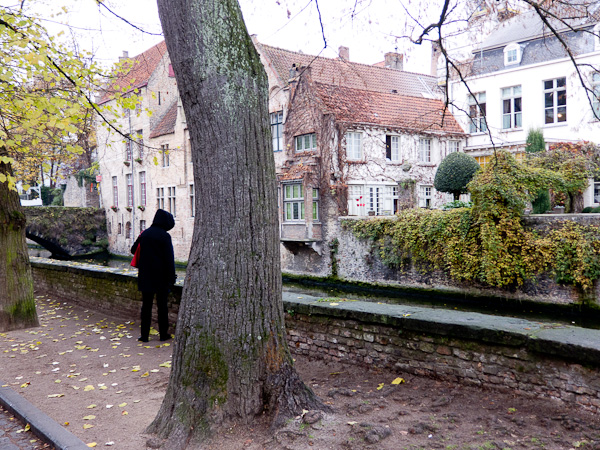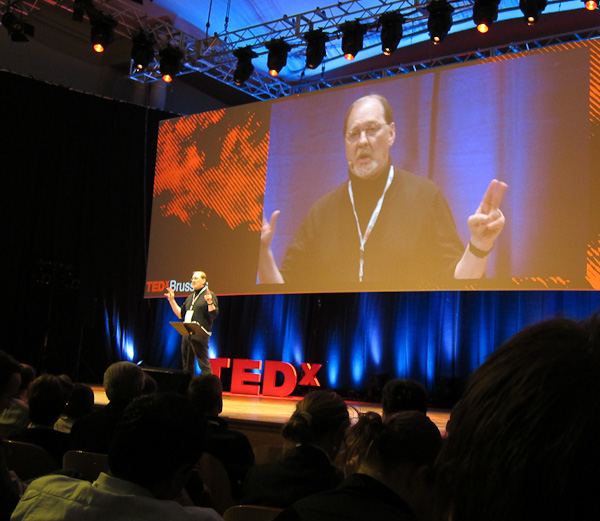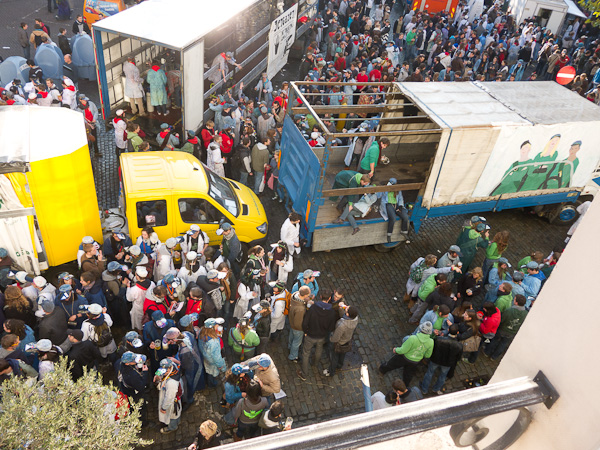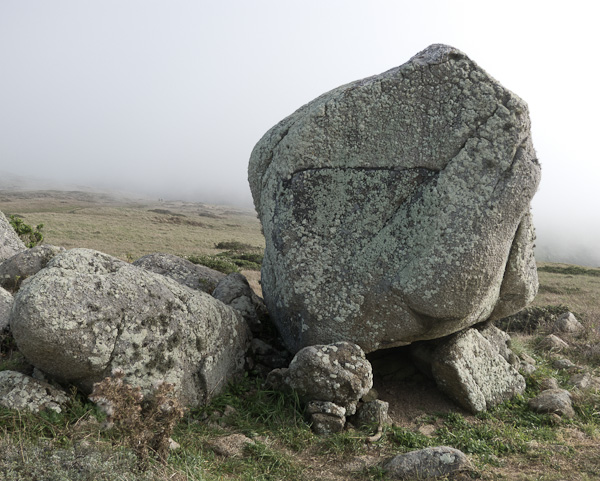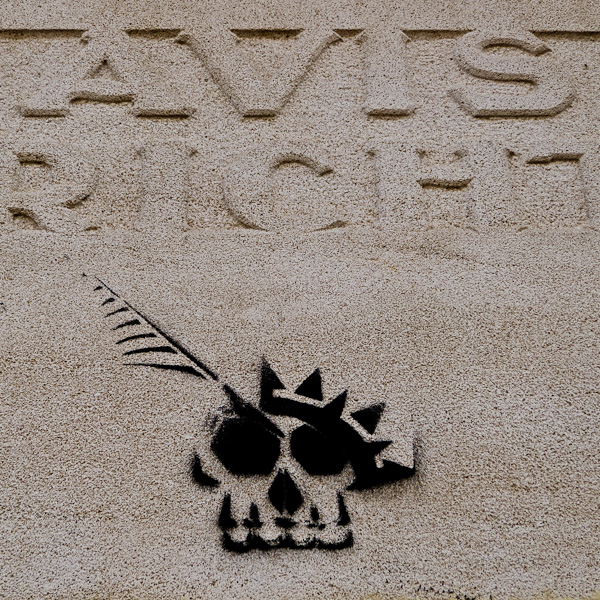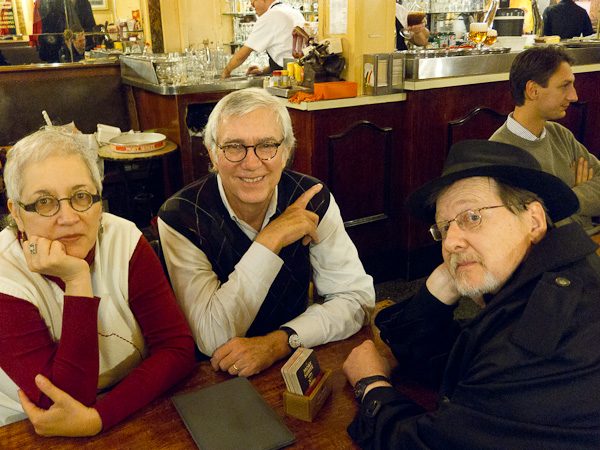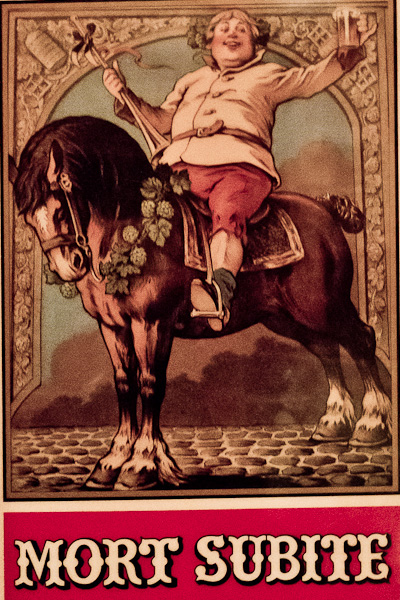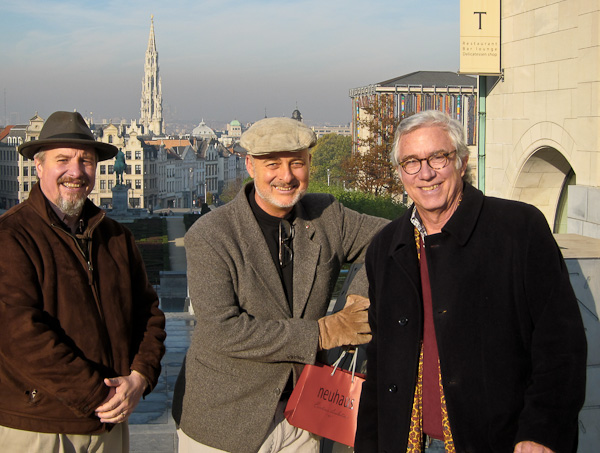I just finished a new painting yesterday, I call it “The Lovers.”
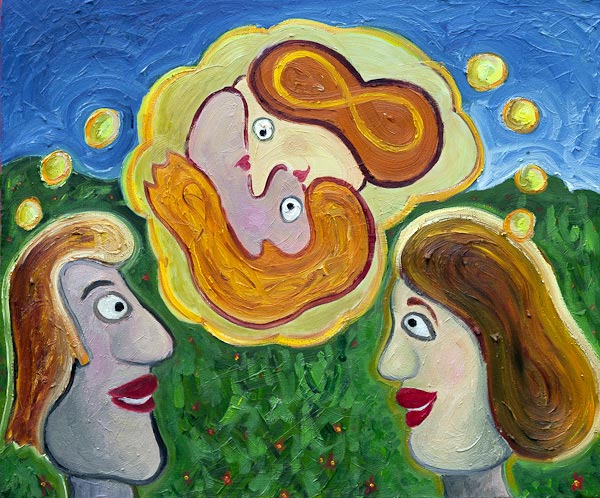
“The Lovers,” by Rudy Rucker, 24 x 20 inches, January, 2012, Oil on canvas. Click for a larger version of the picture.
The idea is that they’re in a nearly telepathic state, sharing a single thought balloon. And in the thought, they’re merged like a yin-yang symbol. Her 1940s bob acquires an infinity symbol, and their lips form a pair of little hearts. An early Valentine’s Day picture!
As always, you can learn more about my work on my Paintings page.

I got a very nice review for my autobio Nested Scrolls by Paul Witcover in the January, 2012, issue of Locus, a magazine about the SF & Fantasy field. Here’s an abridged quote.
Rucker is a writer to whom that cliché “a genuine original” legitimately applies. Nested Scrolls is a pleasantly meandering, chattily digressive read. We hear the authentic voice of the beat, the hippie, the cyberpunk, the hacker, the bomb-throwing revolutionary iconoclast that, at heart, Rucker has always been and remains even at the age of 65—though, to judge by Nested Scrolls, he is the most pleasant and decent bomb-thrower one could ever hope to meet.
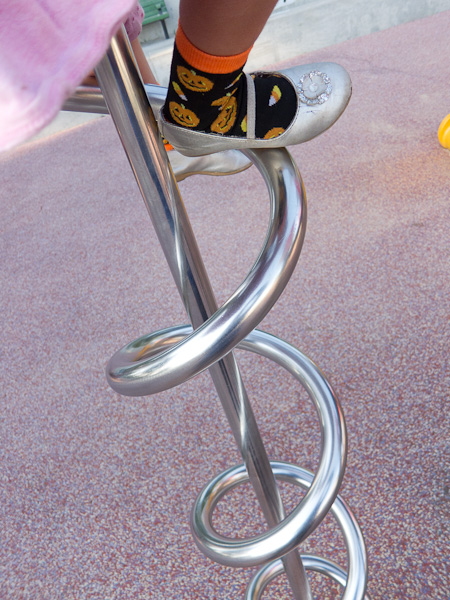
And now a few more thoughts on my notion of people achieving a supernal Big Aha mental state, probably via their physical body’s quantum computations. Today’s photos are older ones, from Point Reyes, San Francisco, and San Jose
People with Big Aha might develop some new augmented senses. What if you could see radio-waves, electrical charges, neutrinos, Higgs bosons, and/or neutrinos? Maybe these senses would let you see specters, archetypes, dreams, or give you teep into other people’s selves.
One way to go here would be to have the new sense be a very highly developed sense of empathy which emerges, one might suppose, from a conscious awareness of quantum entanglement, or awareness of the overarching wave function that includes both you and me as subsystems.
Grokking, in other words.

I have dreams every night, what do they mean?
I think there’s still a lot of interesting things to be done with dreams. Waking up inside them? Finding out that they’re really happening in a higher dimension?
Maybe with Big Aha I can go into your dreams.

With Big Aha we might see ghosts of dead people. Or we might see heretofore invisible aliens whom, for whatever reason, we’re ordinarily unable to perceive. Those flashes of light you see out of the corner of your eye sometimes—maybe those are alien beings.

Finally, let’s suppose that thinking with the Big Aha leads to levels at which myths and archetypes are real. God’s art studio. Or, best of all, the giant’s castle in the clouds atop the beanstalk.
A Big Aha adept learns to see quantum fluctuations and climbs them like steps, up past the clouds and finds the giant there. He steals the bag of gold and the magic harp, climbs down, cuts the stalk and kills the giant.

And then what? Maybe the universe unravels. The giant was God. He was keeping our whole act together.









